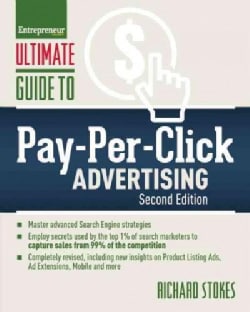Search Engine Optimization Experiment: Part 2

 It’s been an interesting four weeks since my first blog posting. First, on December 24th the web server where SEOSLINGER is hosted had a fatal disk failure and the entire partition had to be restored from backup keeping the site off line for 48 plus hours. To give credit to the web host, they were able to fully restore all of my sites, not just this one, in their entirety, if any data would have been/was lost it would have been any data created the day of the failure which would include the post that precedes this one.
It’s been an interesting four weeks since my first blog posting. First, on December 24th the web server where SEOSLINGER is hosted had a fatal disk failure and the entire partition had to be restored from backup keeping the site off line for 48 plus hours. To give credit to the web host, they were able to fully restore all of my sites, not just this one, in their entirety, if any data would have been/was lost it would have been any data created the day of the failure which would include the post that precedes this one.
In creating this site I drew from my archive of case files for ideas. The case studies are of real life websites that I have worked on, aside from their SEO profiles not much can be disclosed about the case studies due to confidentiality. Each site was chosen for its unique “in the door” condition and how their SEO conditions came about.
The first case study was a site that was developed live. Being developed while online, the site was exposed to web crawlers and many of its pages were indexed by search engines before ready for official release. Many of the indexed pages were indexed with “Lorem Ipsum”, or as commonly referred to as Latin, used as place holders for future content.
The second case study used was a site with its pages heavily crossed linked. A mind map of the linking scheme looked like a mesh without order; evidence that little if any thought was invested before implementing the internal linking strategy. The effort to interlink included the use of multiple navigation menus and custom hand coded links.
And lastly, the third case study site was the subject of over simplification resulting in under developed SEO as if SEO wasn’t part of the equation. Page titles and descriptions were under optimized. Though few would appose the value of page titles, some would strongly argue that page descriptions are not considered by search engines for ranking purposes. More on the value of page descriptions later.
After setting up the site in the image of the three case studies above, and to give the construction of this website as much objectivity as possible, I turned the project over to a team of non SEO’s to finish building it. The team comprised of less than a handful of participants to function free of my influence with the exception of requests for features and functions. The role playing was a study in itself. I played the role of the client and did a pretty good job at hinting about what I wanted for the site, leaving search engine optimization last on my wish list.
The wish list:
- Simple clean design
- Smart navigation
- Blog
- Forum
- Contact form
- Conversions forms
Upon first review of the site my eye was immediately drawn to the usual suspects; [1] navigation, [2] URL structure, [3] page titles, [4] on-page links, and [5] internal linking. I also looked for signs of [6] Java Scripts, Flash, Ajax, and frames to mention a few technologies that don’t favor well with SEO.
Navigation
Multiple navigation menus, though useful for accessibility and enhanced user experience, is often an area where multiple paths to the same content can lead to duplicate content if not implemented correctly.
Java Script
Java Script driven navigational menus can also create another issue, links that are invisible to the search engines. The same is true with flash based navigation and Ajax driven menus.
Navigation/Menus Found:
- Primary Menu
- Secondary Menu (header top)
- Vertical Menu (right bar region)
- Footer Menu (footer region)
Primary Menu
SEO Home | About Us | Search Engine Services | FAQ | Forums | Contact Us
The primary menu, by virtue of its role, should be the obvious navigation system of a site and its placement, whether it’s vertical or horizontal, should be easily identifiable by your visitors. Primary navigational systems are also found either on the left or right sides of websites or at the very top above the site’s logo. When considering on where to put the primary navigational menu it’s important to consider your target audience. A white label website design company would be targeting the website design and development demographic, this demographic is familiar with web site design and will look in the obvious places for the primary navigation. But if your target audience is the demographic looking for legal or accounting services, then they may have a hard time finding the primary navigation if it’s located at the extreme top of the header. User behavior plays a big role, users usually tend to scroll down as soon as they land on your site, if the primary navigation is in the header top region, and fixed, they will be hard pressed to find it once it’s out of view. One solution is to have the menu in a “div” and assign the “float” attribute to the “div” which will keep the navigation in view while scrolling. But that’s subject for another time and post.
There’s some debate about what side is best for the placement a vertical menu. Some argue that the left side is best because it follows the natural movement of the eye, left to right, while other arguments further support left side placement by citing that search engine crawlers enter a site from the upper left side and move left to right and top to bottom just like the human reader would read content on your site hence why content including keywords located first are preferred than last in a URL, and content that is found first on a page (on top) is more important than content further down the page. Keywords, keyword phrases, and page descriptions are preferred to be first in line.
Another influencing factor for a primary menu is the number of categories you want to list first, and the number of sub categories you will be listing under the parent category. As you can assess, there’s quite a bit of deliberate thought that goes into structuring your pages and how you’re going to make those pages available to your visitors and search engines.
Some navigation menu solutions:
- Drop down menu
- Split menu
- Super fish menu
- Accordion menu
- Mega Menu
Secondary Menu
E-commerce | Search Engine Marketing
The secondary menu may be used hosts categories of lesser importance such as Privacy Policies, Terms of Use, Legal Notices, etc. the secondary menu can also be used for items such as contact us, about us, links, etc. secondary menus are usually found, depending on the menu items, either above the logo or search field, if the site has a search field, or footer region depending on how importance of its respective pages.
Footer Menu
I also found a third set of navigational links in the footer region with the following links:
Contact Us | Privacy Police | Site Map
Just by the going back and forth with navigational items I got the impression that there was some confusion as to the weight of some of the SEO topics and where to exactly place them for best accessibility. My knee jerk reaction was to see how many of the links had been indexed and performed a quick domain search by visiting Google and querying the domain name and found that not only had the pages been indexed, but different versions of the same pages had been indexed with different URLs. More on this as we move on.
During the dissecting of the site I began to see several phases in its construct similar to a forensic investigation where you see through the process of systematic discovery a time line of events begin to unfold. I found that some of the site’s development was post launch where structural and linking changes were made, most likely the result of an afterthought or something new learned.
I found three levels of duplicate content – three URL schemes pointing to the same group of content. The first format of URLs suffixed the domain name, SEOSLINGER.com, with a slash (/) followed by “content/page-title”…
SEOSLINGER.com/content/page-title
The above formatting of the URL was later changed to…
SEOSLINGER.com/search-engine-optimization/page-title
And again a third time…
SEOSLINGER.com/searchengineoptimization/page-title
Three sets of URLs and all three lead to the same content. A quick search (site:SEOSLINGER.com) for the indexing of the domain name in Google resulted in confirmation that all three URL formatting conventions had been indexed by Google resulting in three sets of URLs with each set comprising of the 8 original pages of content resulting in triplicates.
Evaluating the URLs from a different perspective, I noticed the use of stop words such as “an”, “and”, “if”, “of”, etc. There’s debate over the use of stop words in URLs. Some argue that such words as “and” when part of a brand name should be included anywhere the brand name is part of a link such as the brand “Friends of Animals”, note the word “of”, it’s also part of the domain name. The situation is so rare that it doesn’t warrant global, especially automated, usage of stop words. If I had to choose between “friendsofanimals” versus “friends-of-animals” I would side with the former (friendsofanimals) for its absence of hyphens. Though I wouldn’t use the stop word “and” in… Tom and Jerry went to the movies; I would when referring to “TOM and JERRY” the cartoon characters. Overall, I recommend not using stop words where ever possible in order to support phrase search and improve performance. Stop words can always make your links look spammy and take up valuable character count better used for keywords.
I see other issues with the site having to do with its esthetics particularly its theme. By theme I’m referring to its dressage, that aspect of the presentation that appeals for better or worse, to the eye.
The first crawl of the site yielded 444 errors with 333 of the errors stemming from duplicate content in the form of page titles; something expected considering that the URL structure had been changed at least three times after going live. Some duplicate content is being caused by widgets particularly the “Five-Star” widget used for scoring content by giving it a rating of one to five stars. And last but not least, the duplicate content caused by multiple links that lead to the same page –these are the hand coded on-page links.
To do list:
- Fix duplicate content on site
- Fix duplicate page titles
- Manage indexed duplicate content
- Fix URL structure
- Remove the stop words from auto generating on page URLs
- Rearrange navigation menus
- Review menu attributes to better represent page content
In the next posting I’ll cover the causes and effects of duplicate content more in detail and explain the measures taken to correct them.
This is a unique article published on SEOSLINGER with exclusivity.





_300x102.png)







